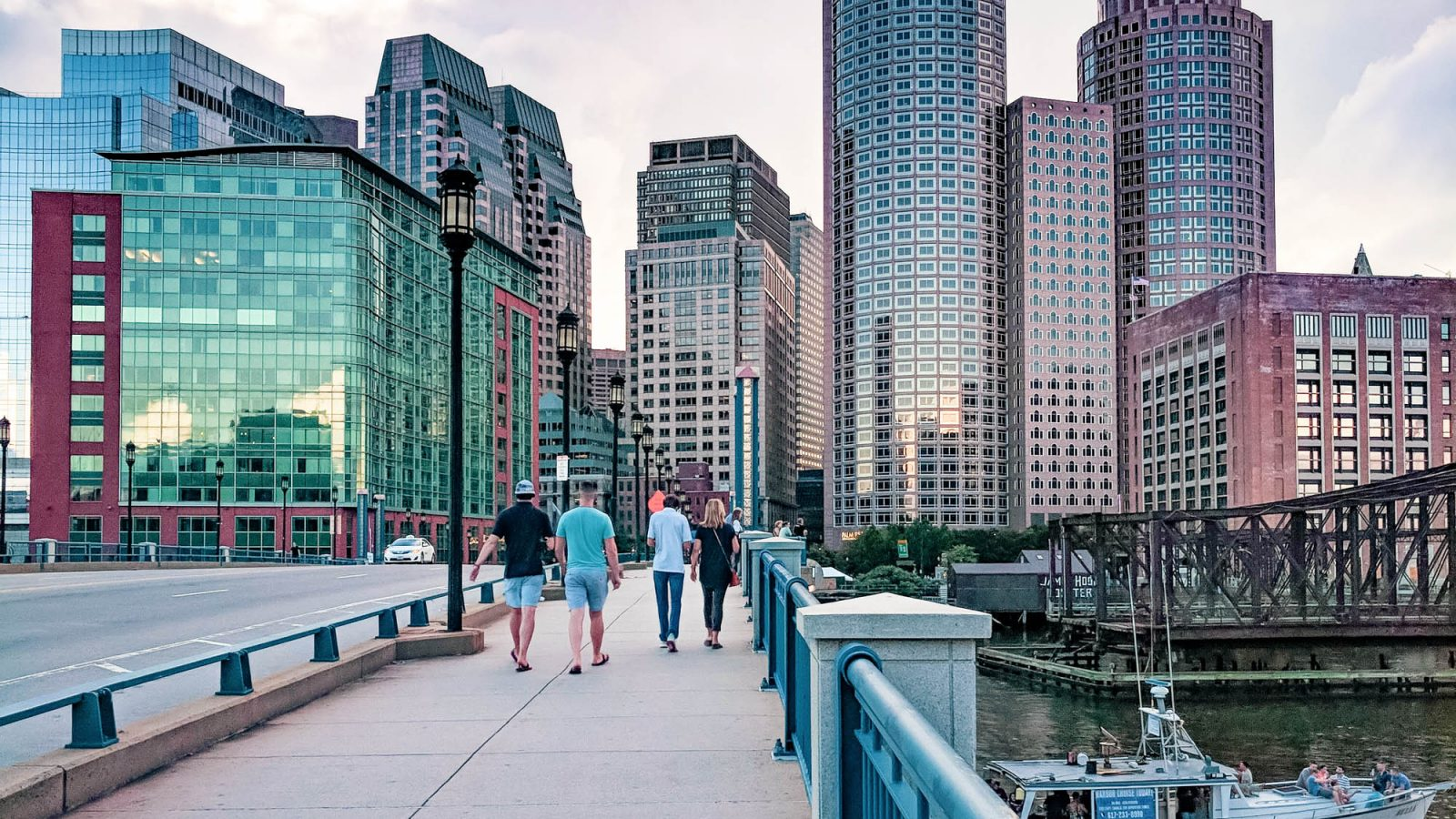With world-renowned museums, vibrant neighborhoods bursting with American history, and scenic waterfront parks, Boston offers endless sights and experiences for visitors on any budget.
| Activity | Description |
|---|---|
| Stroll the Freedom Trail | A walk through historic sites. |
| Boston Common and Public Garden | Parks for leisure and sightseeing. |
| Tour Harvard University | Explore the historic campus. |
| Watch Street Performers in Faneuil Hall | Live entertainment in a market setting. |
| Hike the Emerald Necklace | A greenway of parks and trails. |
| Shops at Quincy Market | Historic market with diverse offerings. |
| Picnic in the Boston Public Garden | Scenic spot for outdoor meals. |
| Tour the State House | Insight into Massachusetts’ government. |
| Museum of Fine Arts on Select Evenings | Free access to art exhibits. |
| Prudential Tower Skywalk | City views from a high vantage point. |
| Cheer on the Boston Marathon | Watch the famous race. |
| Stargaze at Coit Observatory | Astronomy viewings open to the public. |
While activities like duck boat tours, food walks, and Red Sox games often top travelers’ Boston bucket lists, many incredible attractions won’t cost you a penny. From touring iconic Ivy League campuses to exploring the Freedom Trail tracing the steps of America’s founders, read on for the top things to do in Beantown without spending a buck.
Stroll the Freedom Trail
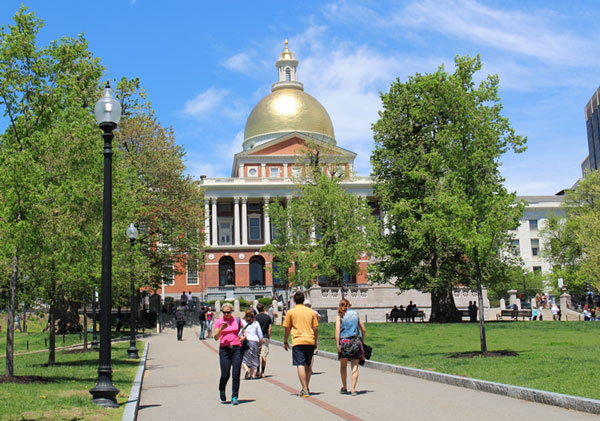
Name and Location: The Freedom Trail is a 2.5-mile-long path through downtown Boston, Massachusetts, that passes by 16 locations significant to the history of the United States.
History and Significance: Established in 1951, the Freedom Trail connects sites that played a pivotal role in the American Revolution. It serves as a historical narrative, guiding visitors through Boston’s rich history and its contributions to American independence.
What to Expect: Visitors can expect to see historic sites such as Paul Revere’s House, the Old North Church, and the USS Constitution. The trail offers a mix of museums, churches, meeting houses, and burying grounds, each with its own story.
Visitor Information: The trail is marked by a line of red bricks or paint, making it easy to follow. Guided tours are available, offering in-depth historical insights, though visitors can also explore the trail independently at no cost.
As one of the most popular free attractions in Boston, the iconic Freedom Trail allows you to walk in the footsteps of Revolutionary heroes. The 2.5 mile red-brick pathway winds through Downtown connecting 16 historical landmarks central to the birth of American independence. Pick up a free map to guide your self-led tour past sites like the golden-domed Massachusetts State House, Park Street Church, and the Old South Meeting House. You’ll stand where the Boston Massacre happened in 1770, tread over cobblestone on the Paul Revere House courtyard, and gaze at the 217-year-old warship USS Constitution. Walk the Freedom Trail at your own pace, whether on a full daytime expedition with stops at every site or simply admiring portions that intrigue you most.
Meander through Boston Common and Public Garden
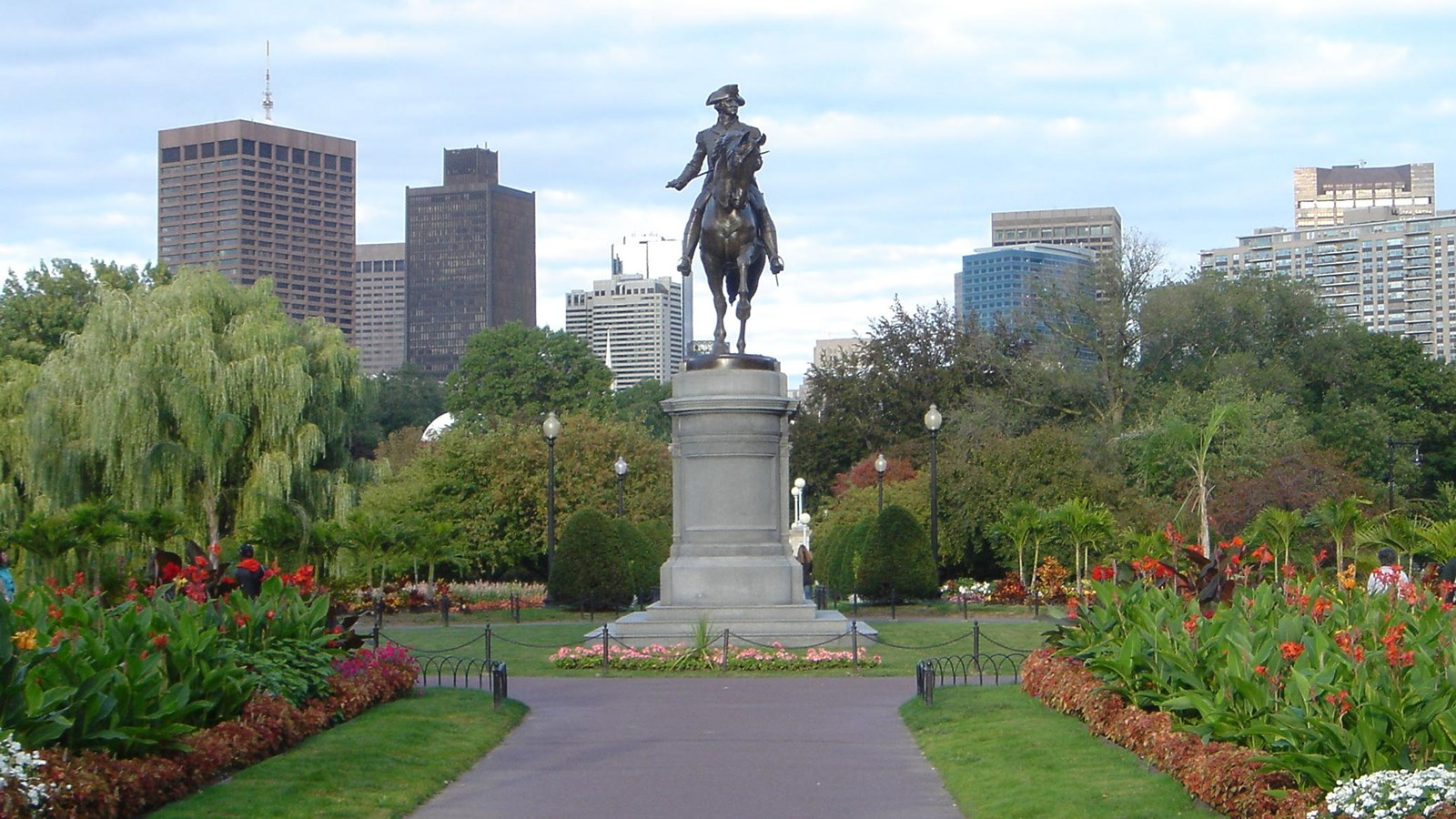
Name and Location: Boston Common and Public Garden are located in the heart of downtown Boston, adjacent to each other.
History and Significance: Boston Common, established in 1634, is America’s oldest public park. The Public Garden, created in 1837, was the first public botanical garden in the U.S. Together, they form a green oasis in the city, offering historical context and natural beauty.
What to Expect: The Common is known for its open spaces and historical monuments, while the Public Garden features manicured paths, a lagoon, and the famous Swan Boats. Both parks offer a peaceful respite from the city and seasonal beauty.
Visitor Information: Open year-round, free to the public. Seasonal activities include ice skating on the Frog Pond in winter and Swan Boat rides in the spring and summer.
Dating back to 1634 as the nation’s first public park, leafy Boston Common offers perfect postcard views of the bronze-and-stone Soldiers & Sailors Monument. See if you can spot the Red Sox pennant perched atop it fluttering above fedora-wearing costumed guides leading free walking tours. Otherwise, find a grassy hill for lounging and people-watching surrounded by oak trees, elaborate fountains, and monuments to American literary legends like Robert Frost. Meandering dirt paths connect Boston Common to the adjacent Public Garden—a 24-acre sanctuary anchored by its serene Swan Boats floating across a pond. Snap selfies on the iconic Lovers’ Lane footbridge and search for Mrs. Mallard and her eight ducklings immortalized in the children’s classic Make Way for Ducklings.
Tour Harvard University and Harvard Yard
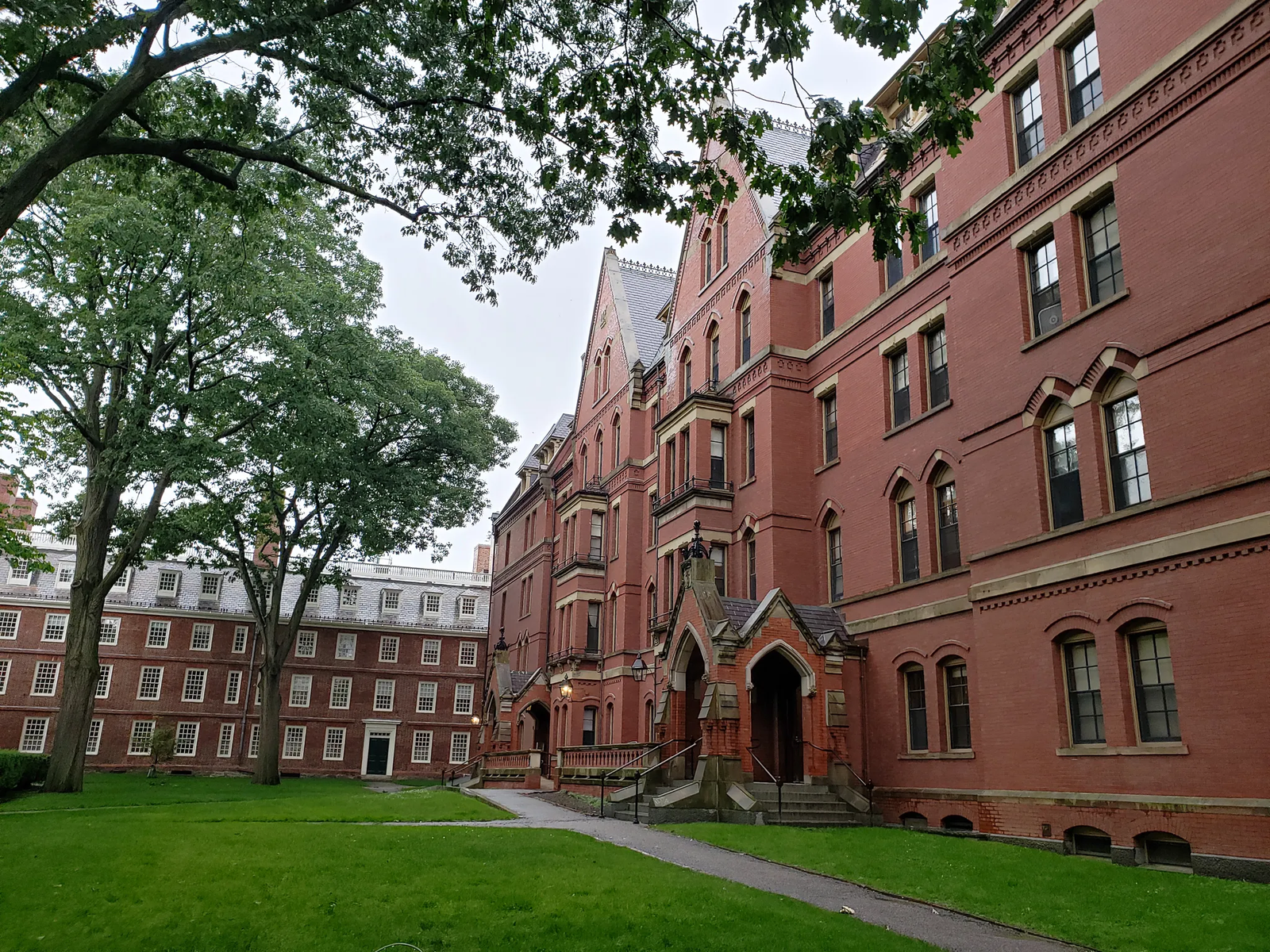
Name and Location: Harvard University, located in Cambridge, just outside Boston, is centered around Harvard Yard.
History and Significance: Founded in 1636, Harvard is the oldest institution of higher learning in the United States, with a long history of scholarship and influence in education and society.
What to Expect: Visitors can explore the historic Harvard Yard, attend public lectures, and visit the Harvard Museums. Tours led by students offer insights into the university’s history, architecture, and student life.
Visitor Information: Public tours are available, though some areas may be restricted. Check the university’s website for tour schedules and visitor information.
Explore Harvard Square’s vibrant mix of bustling cafes, bookstores, street performers, and musicians before venturing onto the revered grounds of Harvard University. Established in 1636, America’s oldest learning institution opens parts of its historic halls and Harvard Yard for free guided student-led tours. An undergraduate student ambassador will walk your small group through highlights like the stately redbrick buildings of Massachusetts Hall and Harvard Hall fronting the Old Yard. You’ll also wander inside Memorial Church with its ornate stained-glass transept paying tribute to Harvard grads lost in battle. Afterward, don’t miss visiting John Harvard’s bronze foot inside University Hall—one of Harvard’s oddest traditions having visitors rub the shiny foot for good luck!
Watch Street Performers in Faneuil Hall

Name and Location: Faneuil Hall is located near the waterfront in downtown Boston, part of the city’s historic market district.
History and Significance: Built in 1742, Faneuil Hall has played a key role in Boston’s social and political life, historically serving as a marketplace and meeting hall.
What to Expect: Today, the area is vibrant with street performers, including musicians, magicians, and artists, entertaining visitors and locals alike. The marketplace also hosts shops and eateries.
Visitor Information: Performances occur throughout the year, weather permitting, with more frequent shows during summer months. Access to the area is free, making it a lively stop for those exploring the city.
No Boston visit feels complete without strolling the lively marketplace area of Faneuil Hall featuring cobblestone streets lined with 18th-century buildings. Historic Faneuil Hall itself has served as a shopping bazaar and political hub since 1742. Today you can watch animatronic patriots like Samuel Adams debate the issues of that time. Outside, block off an afternoon for wandering pedestrian-only streets bordered by over 75 shops, boutiques, pubs and restaurants. Fanuel Hall Marketplace promises free nonstop entertainment from musicians jamming their hearts out, dancers flipping mid-air, and novelty acts that attract even locals back time and again.
Hike the Emerald Necklace

Name and Location: The Emerald Necklace is a 1,100-acre chain of parks linked by parkways and waterways in Boston and Brookline, Massachusetts.
History and Significance: Designed in the late 19th century by Frederick Law Olmsted, the Emerald Necklace was intended to provide a green oasis for urban dwellers, connecting Boston Common to Franklin Park.
What to Expect: The Emerald Necklace offers a variety of landscapes, from wooded parkways to waterways and meadows, suitable for hiking, biking, and leisurely walks. Notable parks in the chain include the Back Bay Fens, the Riverway, Olmsted Park, Jamaica Pond, Arnold Arboretum, and Franklin Park.
Visitor Information: The parks are open year-round and accessible to everyone, with no admission fees. Each park has its own set of attractions and activities, from boating at Jamaica Pond to exploring the diverse plant collections at the Arnold Arboretum.
For an outdoor escape in the city, head to Back Bay Fens to access the start of Boston’s 1,100-acre Emerald Necklace park system. Designed by landscape architect Frederick Law Olmsted, the seven-mile trail connects Boston Common to Franklin Park Zoo by meandering through woodlands, wetlands, and green spaces linked to the Muddy River waterway. Hiking alongside flowering gardens and stone bridges with towering Boston cityscape views makes for ideal romantic walks or family adventures.Highlights dotting the Emerald Necklace route include Commonwealth Avenue Mall’s Georgian Revival row houses and the beautiful grounds of Fenway’s Rose Garden.
Peruse the Shops at Quincy Market
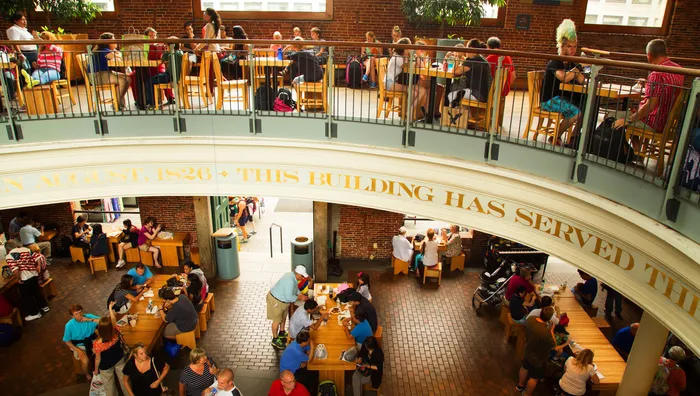
Name and Location: Quincy Market is located in the Faneuil Hall Marketplace in downtown Boston.
History and Significance: Opened in 1826, Quincy Market was originally designed to accommodate the growing demand for market space in Boston. Today, it stands as a vibrant example of historic preservation and urban renewal, bustling with activity and commerce.
What to Expect: Visitors can explore a vast array of shops offering everything from souvenirs and apparel to specialty foods. The market is also famous for its food colonnade, featuring a diverse range of cuisine from local favorites to international dishes.
Visitor Information: Quincy Market is open daily, with hours varying by shop and season. It’s a popular destination for both tourists and locals, offering a lively atmosphere year-round.
Quincy Market’s Georgian-style building bordering Faneuil Hall oozes old-time charm with its arched colonnades looking especially striking lit up at night. Inside the food hall, stalls dish Boston’s best lobster rolls alongside clam chowders rivaling each other for the creamiest in town. You’ll also find plenty of freebies by way of sauce and condiment samples so you can taste your way through the seemingly endless food options. Once your appetite feels satiated, browse the central market’s lively pushcarts overflowing with inexpensive souvenirs. Art prints, Boston-branded gear, jewelry, and other mementos commemorate your Beantown travels without breaking the bank.
Picnic in the Boston Public Garden

Name and Location: The Boston Public Garden is located adjacent to Boston Common in the heart of the city.
History and Significance: Established in 1837, the Public Garden was the first public botanical garden in the United States. It features a Victorian-era landscape with formal plantings, statues, and the famous Swan Boats.
What to Expect: Visitors can enjoy a serene setting perfect for picnicking among beautiful floral displays and shaded areas. The garden’s lagoon offers Swan Boat rides during warmer months, adding to the charm of the park.
Visitor Information: The garden is open to the public year-round, with no admission fee. It’s a popular spot for relaxation, photography, and leisurely strolls.
With pedal boat-dotted lagoons, weeping willows, and 6 acres of flowers powerfully perfuming the urban air, Boston Public Garden invites lazy afternoon picnicking on the grass. Pick up to-go eats from Milk Street Café or Clover Food Lab fronting the park before finding a shady patch of green space to call your own. As you swig iced coffees and nibble on lobster rolls, boaters drift by on the pond while costumed characters like the Cat in the Hat make surprise appearances for quirky photo ops. If visiting between May and Labor Day, be sure to ride the iconic Swan Boats circling the Public Garden lagoon as they have since 1877.
Tour the State House and Bask on City Hall Plaza

Name and Location: The Massachusetts State House is located in Beacon Hill, overlooking Boston Common. City Hall Plaza is situated in downtown Boston, in front of Boston City Hall.
History and Significance: The State House, with its distinctive golden dome, has been the seat of Massachusetts government since 1798. City Hall Plaza is a major civic space known for hosting public events, demonstrations, and celebrations.
What to Expect: Visitors to the State House can take guided tours to learn about the building’s architecture and the state’s legislative process. City Hall Plaza offers a vast open space, often used for concerts, food festivals, and public gatherings.
Visitor Information: Free tours of the State House are available on weekdays. Check the City of Boston’s website for current events and activities scheduled at City Hall Plaza.
Discover beaming gold domes and intricate tile mosaics inside the Massachusetts State House, the working state capitol located on Beacon Hill. Sign up at the visitor’s center for access into representational spaces like the Hall of Flags showcasing battle banners through the centuries and House of Representatives chamber with its wooden desks and chandeliers. Guides share intriguing stories of the political negotiations and architectural embellishments that have happened within these walls since 1798. Afterward, stroll down to City Hall Plaza directly across from Faneuil Hall. There you’ll often find free fitness classes, giant lawn games, ice skating under twinkle lights or national touring exhibits setting up on the sprawling brick plaza.
Visit the Museum of Fine Arts on Select Evenings

Name and Location: The Museum of Fine Arts (MFA) is located in Boston’s Fenway-Kenmore neighborhood.
History and Significance: Founded in 1870, the MFA is one of the largest museums in the United States, housing a diverse and comprehensive collection that spans thousands of years of art history.
What to Expect: On select evenings, the museum offers special programming, including free admission, lectures, performances, and gallery talks. It’s an opportunity to experience the museum’s extensive collection in a unique and engaging way.
Visitor Information: Check the MFA’s website for a schedule of evening events and exhibitions. These evenings are popular, so arriving early is advised to make the most of the visit.
While one of America’s most comprehensive art museums normally charges up to $25 admission, you can see phenomenal paintings, sculpture, musical instruments, photography and textiles spanning thousands of years across two buildings completely free on select weeknights. Sign up for a complimentary ticket to the Museum of Fine Arts Boston’s free community nights allowing access on Wednesdays after 4pm and on select Monday and Friday evenings too. Beyond European masters from Matisse to Monet, standouts include an entire Egyptian tomb, New England folk art, and Art of the Americas collections outlining this exceptional museum’s vast holdings waiting to inspire art lovers.
Take in City Views from Prudential Tower Skywalk
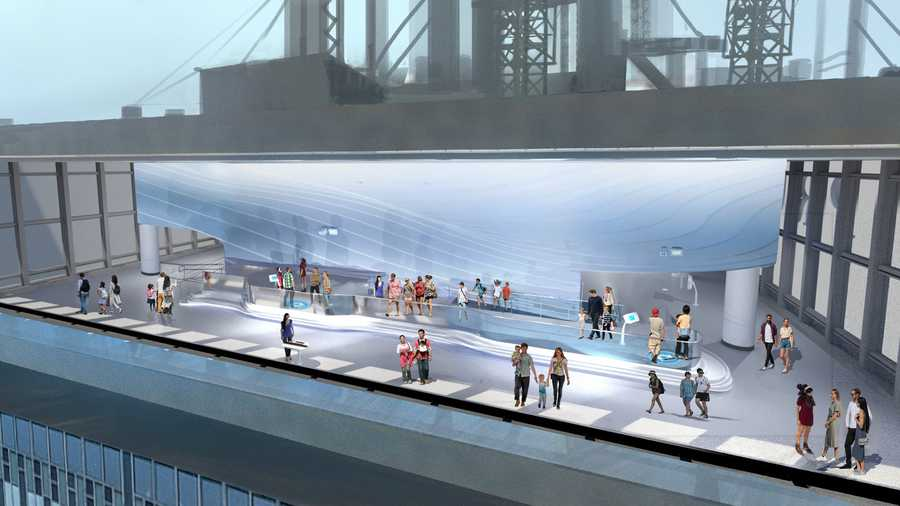
Name and Location: The Skywalk Observatory is located at the top of the Prudential Tower in Boston’s Back Bay area.
History and Significance: The Prudential Tower, completed in 1964, is one of Boston’s most recognizable skyscrapers. The Skywalk Observatory offers panoramic views of the city and beyond, making it a unique vantage point for understanding Boston’s layout and history.
What to Expect: Visitors can enjoy 360-degree views of Boston’s skyline, interactive exhibits about the city’s history, and an audio tour available in multiple languages.
Visitor Information: There is an admission fee for the Skywalk Observatory. It’s recommended to check the operating hours and ticket prices on the official website, as they can vary by season.
Soaring 52 stories high, Boston’s second tallest skyscraper houses the Prudential Tower Skywalk Observatory offering 360° vistas across Beantown from the building’s 50th floor. On clear days, glimpse sights like Fenway Park, Boston Harbor dotted with islands, the Tobin Bridge to Chelsea, and Cambridge landmarks like MIT across the Charles River. And thanks to their free ticket policy, you can visit the Prudential Tower as often as you like during your Boston stay. Simply check in at the Skywalk entrance for walk-up admission to ride the elevator up to the enclosed observation deck anytime between 10am and 10pm.
Cheer on the Boston Marathon
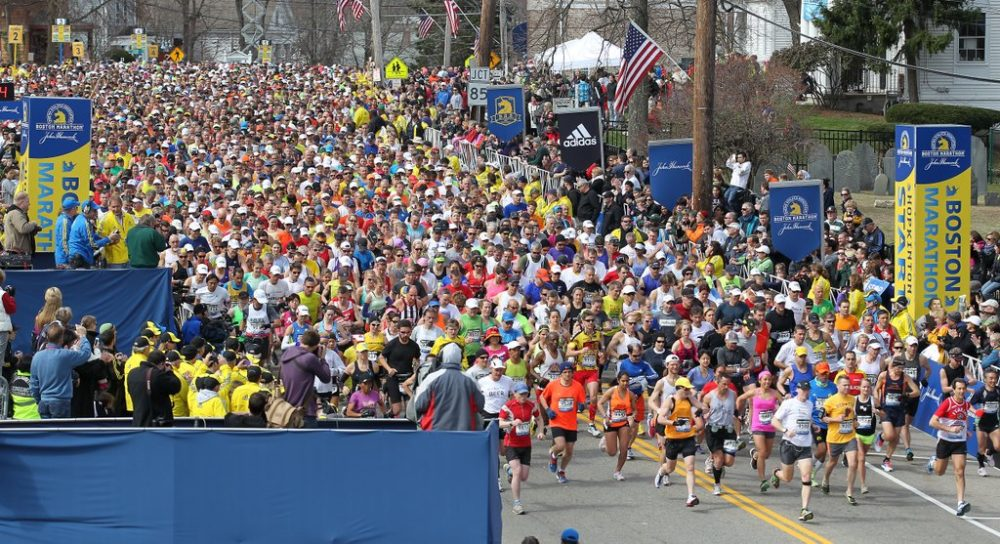
Name and Location: The Boston Marathon is an annual marathon hosted by several cities in greater Boston, finishing on Boylston Street in Boston’s Copley Square.
History and Significance: Established in 1897, it is the world’s oldest annual marathon and one of the most prestigious, attracting runners from all over the globe.
What to Expect: Spectators can expect a festive atmosphere with cheering crowds along the 26.2-mile course. It’s a day of community spirit and athletic achievement, celebrated every Patriots’ Day in April.
Visitor Information: There are no tickets required to watch the marathon, and spectators can choose spots along the route to cheer on the runners. It’s advisable to arrive early to secure a good viewing location.
Every Patriots Day in April, Boston comes out in force to support over 30,000 athletes speeding 26.2 miles on the world-famous course stretching from Hopkinton to Boylston Street downtown. Holding the distinguished title of world’s oldest annual marathon, heart-pumping live bands and rowdy fan encouragement lining Boston’s streets make spectators feel part of this all-day party even without running. Position yourself early along mile 12 Heartbreak Hill in Newton or closer to the finish around Copley Square to best cheer on sweaty strangers like old friends amid jubilant crowds that build as race leaders approach the end. One of the only non-ticketed sporting events guaranteeing Bostonians get swept up in the infectious celebratory spirit unique to Marathon Monday.
Stargaze at Coit Observatory
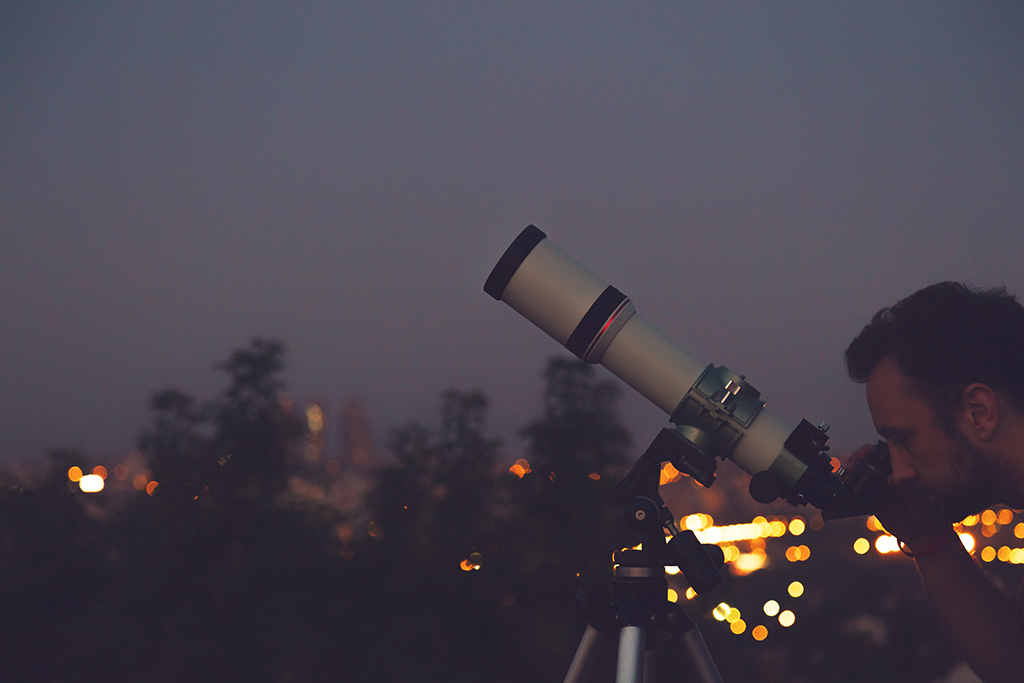
Name and Location: The Coit Observatory is located on the roof of the College of Arts and Sciences at Boston University, situated along the Charles River.
History and Significance: The observatory offers educational opportunities for students and the public to learn more about astronomy. It plays a significant role in Boston University’s science outreach.
What to Expect: The observatory hosts public open nights, weather permitting, allowing visitors to view celestial objects through telescopes and learn about the night sky from experts.
Visitor Information: Public open nights are free, but space is limited, and some events require advance registration. Check Boston University’s Astronomy Department website for schedules and conditions.
Operated by amateur astronomers, the William Barton Rogers Coit Observatory at Boston University holds free viewings of solar eclipses, nebulae, star clusters and various planets visible with their vintage refracting telescope. Their monthly Second Saturday Stars open house happens rain or shine, allowing you to glimpse craters on the moon, Saturn’s rings and other celestial sights from 9pm to midnight. Home to a 12-inch refracting Alvan Clark telescope made in 1866, Coit Observatory’s viewing dome measures an intimate 12 feet in diameter yet reveals infinite galactic wonders when aimed upwards on clear evenings.
Beyond museums boasting billion-dollar art collections or historical walking trails tracing Revolutionary moments, uncovering Boston’s quirky characters – be they street performers, spirited sports fans, or stargazers – connects you with authentic local culture beyond textbook sights. So whether you take in traditional landmarks or embrace the city’s vibrant atmosphere through free festivals, classes and harbor views, savor all the unique local flavors Boston offers.

